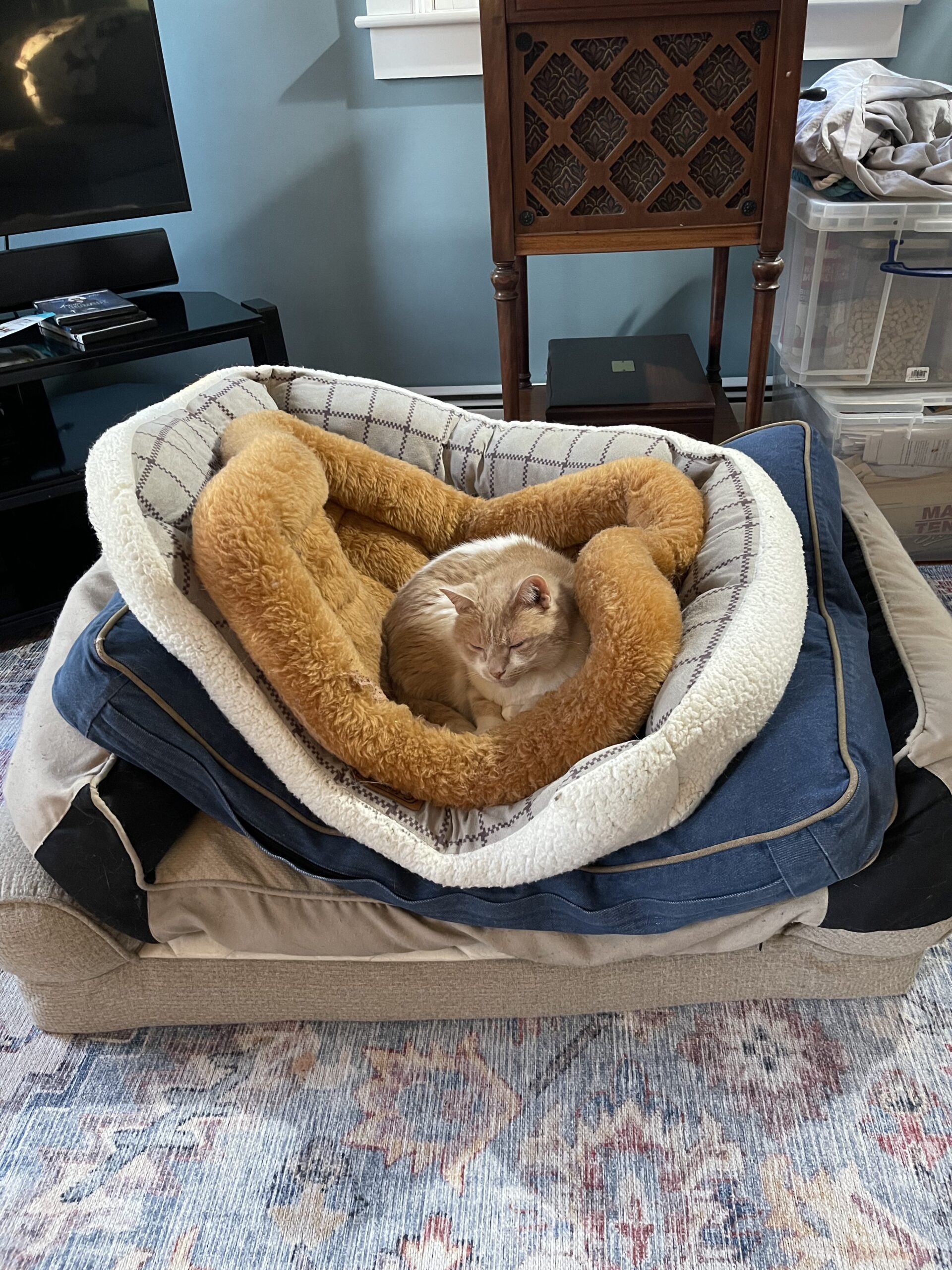 As our beloved cats and dogs age, they often face various health challenges that can lead to chronic pain. This discomfort can significantly affect their quality of life, making it essential for pet owners to recognize the signs of pain and explore effective pain management strategies. In this post, we’ll discuss various approaches to keeping your senior pet comfortable during their twilight years, with a focus on environmental modifications.
As our beloved cats and dogs age, they often face various health challenges that can lead to chronic pain. This discomfort can significantly affect their quality of life, making it essential for pet owners to recognize the signs of pain and explore effective pain management strategies. In this post, we’ll discuss various approaches to keeping your senior pet comfortable during their twilight years, with a focus on environmental modifications.
Recognizing Pain in Senior Pets
Unlike humans, pets cannot vocalize their discomfort, making it crucial for owners to be observant. An excellent resource for recognizing pain in cats is the Feline Grimace Scale. For more information and to access this tool, click here. Other common signs of pain in senior cats and dogs include:
- Changes in Behavior: Increased aggression, withdrawal, or unusual hiding can indicate pain.
- Altered Mobility: Difficulty climbing stairs, reluctance to jump, or limping are highly suggestive of discomfort.
- Vocalizations: Uncharacteristic whining, growling, or yelping can signal distress. This is more likely to occur with acute pain. With chronic pain, pets may get quieter.
- Changes in Activities: For dogs, this can be as simple as discontinuing or shortening activities such as playtime, fetch, or leash walks. For cats, it can be as subtle as not changing their napping places as the sun moves from one window to another.
- Changes in Appetite: A decreased interest in food or sudden changes in eating habits may also be a sign of pain.
Understanding these signs can help you intervene early, improving your pet’s comfort.
Environmental Modifications
Creating a comfortable living environment can significantly ease your pet’s pain and enhance their quality of life. Here are some effective modifications to consider:
- Soft Bedding: Provide an orthopedic bed with adequate support to cushion your pet’s joints. Look for beds made of memory foam or gel-infused materials that conform to the body’s shape, helping to relieve pressure points. The bedding needs to be supportive without being too tall or cumbersome to get into and out of the bed. If they can’t easily step into it, they won’t use it – no matter how plush.
- Easy Access: If your pet struggles with mobility, consider using ramps or pet stairs to help them reach their favorite spots, such as the couch or bed. Ensure these are stable, not steep, and designed for your pet’s size to ensure their safety.
- Non-Slip Surfaces: If your home has slippery floors, consider adding non-slip mats or rugs in high-traffic areas to help your pet navigate safely. This reduces the risk of falls and provides better traction for their paws. Thin yoga mats are ideal and easy to clean.
- Temperature Control: Keep your pet’s living area comfortable by regulating the temperature to their preferred level. Older pets may be more sensitive to extreme heat or cold. In winter, provide blankets or heated pads, and in summer, ensure they have access to cool, shaded areas. Think heated beds for cats and cooling mats for dogs.
- Quiet Spaces: Create a peaceful retreat where your pet can rest without interruptions. This could be a cozy corner with their favorite bedding or a quiet room away from household activity.
- Accessible Food and Water: Make sure your pet can easily access their food and water bowls. Elevated bowls can reduce strain on their neck and back, and adding a non-slip mat in front of the bowl allows your pet to stand on it.
- Regularly Updated Living Space: As your pet ages, their needs may change. Regularly assess their environment to ensure it meets their evolving requirements. This may include moving items they frequently use closer to their resting areas.
- Interactive Enrichment: Engage your senior pet’s mind while considering their comfort and well-being. Provide toys that encourage gentle play without requiring excessive movement. Puzzle feeders can stimulate their brains while they remain comfortably stationary. For dogs, LickiMats, snuffle mats, and Kongs stuffed with canned food and then put in the freezer, are easy entertainment items.
- Lighting Adjustments: Adequate lighting can help older pets navigate their surroundings more easily. Install night lights or ensure well-lit pathways to help them find their way, especially during the night.
- Regular Cleanliness: Keep your pet’s living area clean and free of clutter. This minimizes the risk of accidents and helps create a serene environment that promotes relaxation.
Emotional Support
Don’t underestimate the power of companionship. Spending quality time with your pet can alleviate their anxiety and enhance their overall well-being. Gentle play, short walks, and simply sitting together can provide comfort and connection.
Managing pain in senior pets requires a comprehensive approach that emphasizes environmental modifications, emotional support, and attentive observation. By creating a comfortable living space and recognizing the signs of discomfort, you can ensure your furry friend enjoys their final years with the comfort and dignity they deserve. A proactive stance on pain management can significantly enhance your pet’s quality of life, allowing for cherished moments together. At Paws at Home, we recognize that your senior pet may experience aches and pains. By assuming they are hurt, rather than assuming they are not, we have been more successful in improving the quality of their life. Treating a pet for pain and watching for it to return to its regular activities tells us when we’re on the right track. If you would like more specific advice or to schedule an appointment, please call our office at (802) 871-2329.
